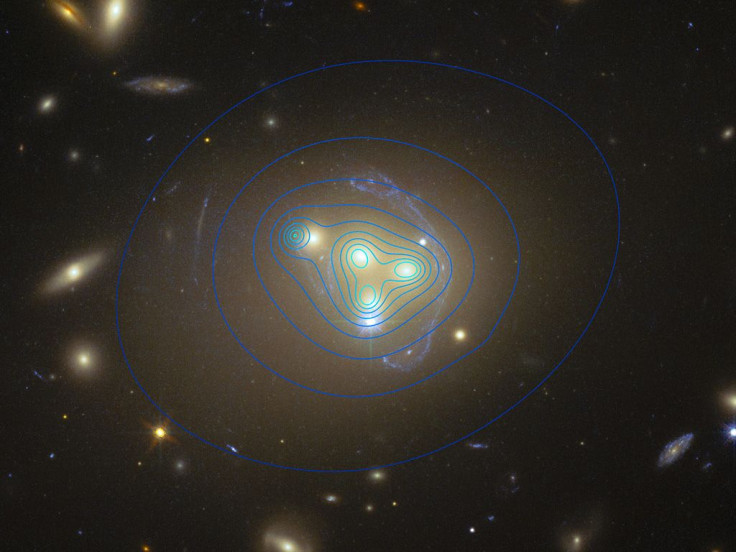Self-Interacting Dark Matter Detected? Galactic Collisions Reveal Surprising Results

The one mysterious trait that distinguishes “dark matter” from normal, visible matter is its tendency to interact with the latter only through gravity and not through any of the other fundamental forces of nature.
Because of this peculiar characteristic, astronomers have attempted to observe collisions between galaxies as a way to shed light on the invisible matter that makes up most of the mass in the universe. Now, for the first time ever, scientists may have observed dark matter interacting with other dark matter in a way other than through the force of gravity. Before the report's findings, conventional wisdom held that dark matter particles did not interact with each other at all.
“We used to think that dark matter just sits around, minding its own business, except for its gravitational pull,” Richard Massey from Durham University -- lead author of a study detailing the surprising findings -- said, in a statement. “But if dark matter were being slowed down during this collision, it could be the first evidence for rich physics in the dark sector -- the hidden Universe all around us.”
Using the European Southern Observatory’s Very Large Telescope in Chile and the Hubble Space Telescope, a team of astronomers observed the simultaneous collision of four galaxies in the galaxy cluster Abell 3827 -- a massive cluster located over 1.4 billion light-years from Earth. Since our current understanding posits that all galaxies are composed primarily of clumps of dark matter, their collision gave scientists a unique opportunity to detect and study this elusive substance.
During these collisions, which occurred directly in front of a much more distant, unrelated light source, scientists observed something that did not conform to current theories attempting to explain the nature of dark matter. The researchers observed one dark-matter clump lagging 5,000 light-years behind the galaxy it surrounds -- a phenomenon that can only be explained if dark matter interacted with itself.
“Our observation suggests that dark matter might interact with forces other than gravity, meaning we could rule out some key theories about what dark matter might be,” Liliya Williams from the University of Minnesota, a co-author of the paper published in the journal Monthly Notices of the Royal Astronomical Society, on Wednesday, said, in the statement. However, she added, we know “embarrassingly little” about what exactly this exotic substance is.
Although the hypothetical Weakly Interacting Massive Particles (WIMP) -- believed to interact with normal matter through gravity and the weak nuclear force -- are currently the leading candidate to explain the composition of dark matter, even the world's most powerful particle accelerator has so far failed to detect them.
© Copyright IBTimes 2024. All rights reserved.












